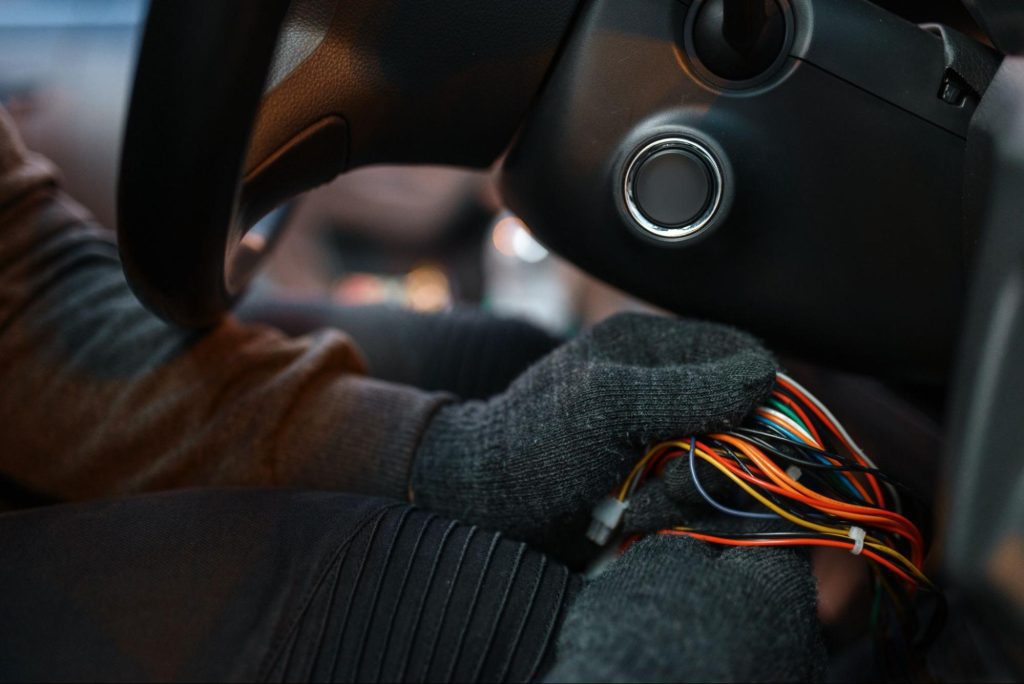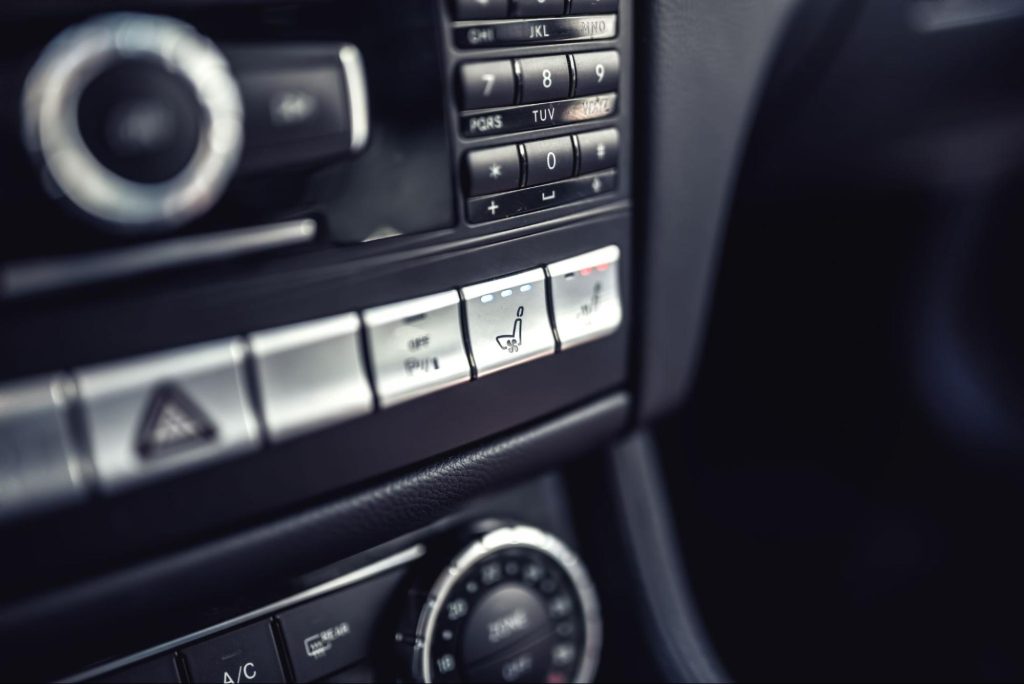ECM vs PCM: What’s the Difference?
Whether you’re aiming to tune your car or diagnose why it isn’t running smoothly, understanding onboard computers is essential. Terms like ECM (Engine Control Module) and PCM (Powertrain Control Module) are often used interchangeably when discussing engine electronics, but they have distinct roles. Let’s explore how these components function, helping you troubleshoot, repair, and enhance your car’s performance. If you need expert assistance or high-quality parts, SOLO offers comprehensive sales and repair services for all your ECM and PCM needs.


WHAT IS AN ECM? – Engine Control Module
An ECM is an engine control module, sometimes referred to as an engine control unit (ECU). This computer takes incoming sensor data and uses that information to alter the function of electronic systems for better performance. The ECMs introduced in the early 1980s could only control fuel injection, but as electronics and engine design have improved, the function of these devices has spread to almost every aspect of operation.
In a modern engine, the ECM will gather information from the intake, exhaust, cooling system, and several internal components to judge the running condition of the engine. From there, it can decide the position of the camshafts, the throttle position, ignition timing, fuel injection timing, and, in turbocharged cars, wastegate pressure.
WHAT IS A TCM? – Transmission Control Module
Before we get into the Powertrain Control Module, let’s talk about the Transmission Control Module (TCM) since it works in tandem with the ECM. It’s sometimes referred to as a transmission control unit (TCU). This device uses incoming sensor data to determine when the transmission needs to shift. Over the years, the functionality of these devices has improved, adding input from the cruise control, throttle, and traction control system, reducing gear hunting and wheel spin.
Both automatics and dual-clutch manual transmissions have TCMs, but traditional manual transmissions do not. The ECM, if it has electronic functions, handles manual transmissions. For example, the Active Rev Matching in a Corvette matches clutch and engine RPM during shifts using wheel speed data from the traction control system and a shifter position sensor on the transmission.
WHAT IS A PCM? – Powertrain Control Module
The PCM (Powertrain Control Module) is the main computer in the modern vehicle that controls all its functions. By placing control of both the transmission and engine into one unit, the PCM can better coordinate their functions for better power delivery and fuel economy. For example, when the PCM decides to change gears, it can back off the throttle to make the shift smoother.
Although a PCM may look like a single unit from the outside, most contain a separate ECM and TCM, each with its own processor and programming ROM. These act independently during most operations, sharing data when a function requires both systems to work together. For tuners, that means programming can be updated on one system while leaving the other untouched.
Key Functions Monitored by the PCM
The PCM senses and monitors more than 100 factors in a car or truck. Here are a few of the most essential processes.
- Air-to-Gas Ratio – The PCM adjusts the air-to-gas ratio when pumped into the car’s cylinders, saving fuel.
- Ignition Timing – The PCM can control the speed of the spark plug firing, helping the engine deliver an optimum amount of power per RPM.
- Idle Speed – The PCM ensures that your car’s idle speed is not revved up to a higher than necessary RPM to manage any ancillary activities, such as air conditioning.
- Performance Monitoring—The PCM can monitor the car’s performance using sensors such as temperature, oil and fluid level, air intake, emission level, camshaft angle, or throttle position. The check engine light will appear when the PCM can’t restore them to ideal levels.
The PCM (Powertrain Control Module) is the main computer in the modern vehicle that controls all its functions. By placing control of both the transmission and engine into one unit, the PCM can better coordinate their functions for better power delivery and fuel economy. For example, when the PCM decides to change gears, it can back off the throttle to make the shift smoother.
Although a PCM may look like a single unit from the outside, most contain a separate ECM and TCM, each with their own processor and programming ROM. These act independently during most operations, sharing data when a function requires both systems to work together. For tuners, that means programming can be updated on one system while leaving the other untouched.
Differences between PCM, ECM, and TCM
- PCM (Powertrain Control Module): The PCM is the central unit that combines both the ECM and TCM. It oversees and integrates the functions of both the engine and the transmission for optimal performance and efficiency.
- ECM (Engine Control Module): The ECM, or Engine Control Unit (ECU), is specifically responsible for managing the engine’s functions. It regulates the air-to-fuel ratio, ignition timing, idle speed, and other engine-related parameters to ensure optimal performance and efficiency.
- TCM (Transmission Control Module): The TCM manages the transmission functions. It controls gear shifts, monitors transmission fluid temperature, and ensures that the transmission operates smoothly and efficiently.
Causes of PCM Failure
Despite its crucial role, the PCM can sometimes fail due to various reasons:
- Electrical Issues: Voltage overloads, shorts, or surges can damage the PCM’s circuitry.
- Environmental Factors: Excessive heat, moisture, and vibrations can affect the PCM’s performance and longevity.
- Wiring Problems: Damaged, corroded, or disconnected wiring can lead to communication issues between the PCM and other vehicle components.
- Component Wear: Over time, the internal components of the PCM can wear out or fail, leading to malfunction.
- Software Corruption: Errors or corruption in the PCM’s programming can cause it to malfunction, requiring reprogramming or replacement.
- Sensor Failures: Faulty sensors that provide data to the PCM can lead to incorrect operations or cause the PCM to fail in interpreting the vehicle’s status accurately.
Essential Processes Monitored by the PCM
The PCM senses and monitors more than 100 factors in a car or truck. Here are a few of the most essential processes:
- Air-to-Gas Ratio: The PCM adjusts the air-to-gas ratio being pumped into the cylinders of the car, which saves fuel.
- Ignition Timing: The PCM can control the speed of the spark plug firing, helping the engine deliver an optimum amount of power per RPM.
- Idle Speed: The PCM ensures that your car’s idle speed is not revved up to a higher than necessary RPM to manage any ancillary activities, such as air conditioning.
- Performance Monitoring: The PCM can monitor the car’s performance using sensors such as temperature, oil and fluid level, air intake, emission level, camshaft angle, or throttle position. The check engine light will appear when the PCM can’t restore them to ideal levels.
Understanding the role and importance of the PCM, ECM, and TCM, as well as the potential causes of PCM failure, can help diagnose and address issues to maintain a modern vehicle’s optimal performance.


Why the Confusion Between ECM and PCM?
There are three primary reasons why these terms are often confused:
– Vehicle Manufacturer – The types of computer modules you have and how they’re configured in your car depending on the manufacturer, so you’ll want to consult your owner’s manual to be sure of their specific terminology.
– Modern vs Older Vehicles – Since 1996, vehicles have shifted toward a single operating unit (the PCM). The PCM manages all systems, but as noted earlier, they can still work independently. Older automobile models had two computers, the ECM and the TCM. The ECM controls the engine function, and the TCM controls the transmission. Cars with manual transmission only had an ECM because there was no need for a computer to operate the transmission functions.
Electronic Control Unit—The term electronic control unit (ECU) is often used as a generic term for any built-in system that controls multiple electrical features in a car. It could include systems like the ones above, or Body Control Modules (BCM), Brake Control Modules (BCM), central control Modules (CCM), central timing Modules (CTM), and many others. Again, this depends on the car manufacturer.
Troubleshooting the ECM or PCM
If your car has been having the issues below and the root mechanical causes are hard to find, it’s possible your ECM or PCM needs to be repaired or replaced.
- Check Engine Light – The light goes on and off and doesn’t seem to correspond to an actual mechanical problem.
- Engine Stalling or Misfiring – Stalling and misfiring may occur without any pattern to frequency or severity.
- Engine Performance Issues – You’ll notice a reduction in fuel efficiency, power, and acceleration.
- Car Not Starting—Your vehicle does not start or is difficult to start. The engine may still crank, but it won’t start without vital input from the computer.
Before deciding to repair or replace your ECM or PCM, make sure you’ve eliminated all the mechanical reasons for your car’s performance issues.
Alt text: what is the pcm on a car
Improving Car Performance through Reflashing
Reflashing is essentially a software upgrade. Control modules (ECMs, TCMs, and PCMs) are built with microchips that can be reprogrammed electronically without being removed from the vehicle. Auto manufacturers are continually updating controller software to solve problems such as false diagnostic trouble codes, hesitation, rough idle, emissions problems, hard starting, poor fuel economy, engine management issues, warning lights, and other PCM-related problems.
If you’re not under warranty or using a dealer for tune-ups, your car could benefit from reflashing. Reflashing can improve your car’s fuel efficiency, add more torque, or provide a faster throttle response. A professional tune is highly recommended when used in conjunction with other aftermarket parts.
At Solo Auto, we specialize in the highest-quality used, repaired, and remanufactured control modules on the market. Our dedicated technicians can assess your unit, usually within 24 to 48 hours, and have it back in the mail to you. Contact us for a free estimate.









